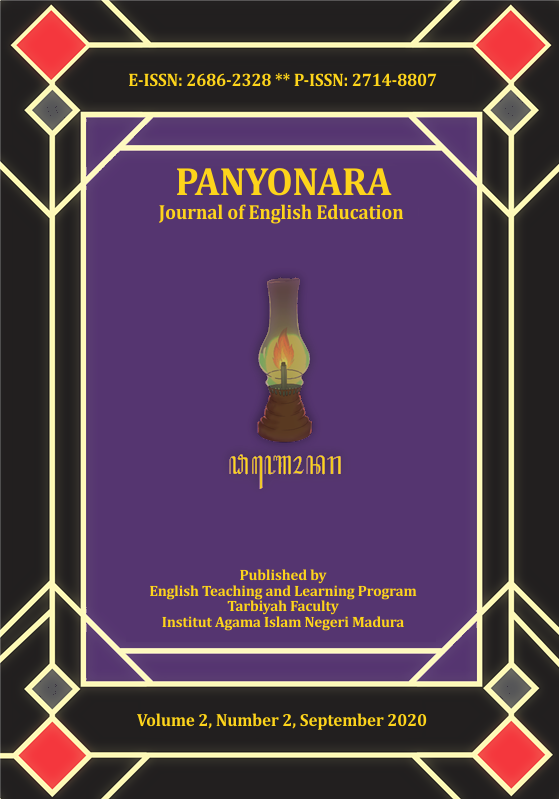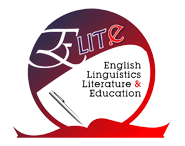Implementation of Teacher and Peer Feedback in Writing Hortatory Exposition Text
 Abstract views: 331
,
Abstract views: 331
,
 PDF downloads: 286
PDF downloads: 286
Abstract
Downloads
References
Berg, E. C. (1999). The Effects of Trained Peer Response on ESL Students' Revision Types a Writing Quality. Journal of Second Language Writing, 8(3), 215–241. doi: 10.1016/S1060-3743(99)80115-5.
Burgess, S., & Head, K. (2005). How to Teach for Exams. London: Longman.
Cahyono, B. Y. (2010). Second Language Acquisition and English Language Teaching. Malang: State University of Malang Press.
Cahyono, B. Y., & Widiati, U. (2004). The Tapestry of English Language Teaching and Learning in Indonesia. Malang: State University of Malang Press.
Cahyono, B. Y., & Widiati, U. (2015). The Teaching of EFL Listening in the Indonesian Context: The State of the Art. TEFLIN Journal, 20(2), 194–211. doi: 10.15639/teflinjournal.v20i2/194-211.
Carnell, E. (2000). Dialogue, Discussion and Secondary School Students on How Others Help Their Learning (Askew, Ed.). London: Routledge.
Carson, J. G., & Nelson, G. L. (1996). Chinese Students’ Perceptions of ESL Peer Response Group Interaction. Journal of Second Language Writing, 5(1), 1–19. doi: 10.1016/S1060-3743(96)90012-0.
Chaudron, C. (1988). Second Language Classroom Research on Teaching and Learning. Cambridge: Cambridge University Press.
Choi, J. (2013). Does Peer Feedback Affect L2 Writers’ L2 Learning, Composition Skills, Metacognitive Knowledge, and L2 Writing Anxiety. English Teaching, 68(3), 187–213. doi: 10.15858/ENGTEA.68.3.201309.187.
Dean, C. B., Hubbell, E. R., Pitler, H., & Stone, B. J. (2011). Classroom Instruction that Works: Research-based Strategies for Increasing Student Achievement (2nd ed.). Colorado: McREL.
H., B. (2014). Contribution of Peer Assessment Method to Teacher Education (Unpublished Master Thesis). Karadeniz Technical University Institute of Educational Sciences, Trabzon.
Hansen, J. G., & Liu, J. (2005). Guiding Principles for Effective Peer Response. ELT Journal, 59(1), 31–38. doi: 10.1093/elt/cci004.
Harmer, J. (2004). The Practice of English Language Teaching. New York: Pearson Longman.
Hattie, J., & Timperley, H. (2007). The Power of Feedback. Review of Educational Research, 77(1), 81–112. doi: 10.3102/003465430298487.
Hill, F. (2007). Feedback to Enhance Student Learning: Facilitating Interactive Feedback on Clinical Skills. International Journal of Clinical Skill, 1(1), 21–24.
Kusumaningrum, S. R., Cahyono, B. Y., & Prayogo, J. A. (2019). The Effect of Different Types of Peer Feedback Provision on EFL Students’ Writing Performance. International Journal of Instruction, 12(1), 213–224. doi: 10.29333/iji.2019.12114app.213-224.
Lam, R. (2010). A Peer Review Training Workshop: Coaching Students to Give and Evaluate Peer Feedback. TESL Canada Journal, 27(2), 114. doi: 10.18806/tesl.v27i2.1052.
Langan, J. (2001). College Writing Skills with Readings. New York: McGraw-Hill Ryerson, Limited.
Lestari, L. A. (2008). The Interactional Approach to the Teaching of Writing and its Implications for Second Language Acquisition. TEFLIN Journal, 19(1), 42–56. doi: 10.15639/teflinjournal.v19i1/42-56.
Lodico, M. G., Spaulding, D. T., & Voegtle, K. H. (2006). Methods in Educational Research: From Theory to Practice. San Fransisco: John Wiley & Sons.
Mangelsdorf, K. (1992). Peer Reviews in the ESL Composition Classroom: What do the Students Think? ELT Journal, 46(3), 274–284. doi: 10.1093/elt/46.3.274.
Min, H.-T. (2005). Training Students to Become Successful Peer Reviewers. System, 33(2), 293–308. doi: 10.1016/j.system.2004.11.003.
Min, H.-T. (2006). The Effects of Trained Peer Review on EFL Students’ Revision Types and Writing Quality. Journal of Second Language Writing, 15(2), 118–141. doi: 10.1016/j.jslw.2006.01.003.
Park, J. (2017). Benefits of the Process Approach in L2 Writing: From the Prospective Teachers’ Perspectives. The Journal of Linguistics Science, 82, 117–136. doi: 10.21296/jls.2017.09.82.117.
Rachmayani, A., Rifai, A., & Rohadi, T. (2018). Exploring Students’ Response to Peer Feedback Strategy INEFL Writing Class at State Senior High School 1 Susukan. ELT Echo : The Journal of English Language Teaching in Foreign Language Context, 3(1), 59. doi: 10.24235/eltecho.v3i1.2810.
Rodliyah, R. S., Cahyono, B. Y., Widiati, U., & Prayogo, J. A. (2017). The Effect of Meaning-focused Feedback as well as Language-focused Feedback in Journal Writing on Indonesian EFL Students’ Writing Ability. International Journal of English and Education, 6(4), 103–113.
Saito, H., & Fujita, T. (2004). Characteristics and user acceptance of peer rating in EFL writing classrooms. Language Teaching Research, 8(1), 31–54. doi: 10.1191/1362168804lr133oa.
Saville-Troike, M. (2006). Introducing Second Language Acquisition. Cambridge: Cambridge University Press.
Sheen, Y., Wright, D., & Moldawa, A. (2009). Differential Effects of Focused and Unfocused Written Correction on the Accurate Use of Grammatical Forms by Adult ESL learners. System, 37(4), 556–569. doi: 10.1016/j.system.2009.09.002.
Soles, D. (2007). The Concise Guide to Teaching Composition. New Jersey: Pearson/Prentice Hall.
Tai, H.-C., Lin, W.-C., & Yang, S. C. (2015). Exploring the Effects of Peer Review and Teachers’ Corrective Feedback on EFL Students’ Online Writing Performance. Journal of Educational Computing Research, 53(2), 284–309. doi: 10.1177/0735633115597490.
Ting, M., & Qian, Y. (2010). A Case Study of Peer Feedback in a Chinese EFL Writing Classroom. Chinese Journal of Applied Linguistics, 33(4), 87–98. doi: http://www.celea.org.cn/teic/92/10120606.pdf.
Widiastuti, I. A. M. S., Mukminatien, N., Prayogo, J. A., & Irawati, E. (2019). Students’ Perception of Assessment and Feedback Practices: Making Learning Visible. International Journal of Sustainability, Education, and Global Creative Economic (IJSEGCE), 2(1), 1–8. doi: 10.1234/ijsegce.v2i1.49.
Xiao, Y., & Lucking, R. (2008). The Impact of Two Types of Peer Assessment on Students’ Performance and Satisfaction within a Wiki Environment. The Internet and Higher Education, 11(3), 186–193. doi: 10.1016/j.iheduc.2008.06.005.
Yang, M., Badger, R., & Yu, Z. (2006). A comparative study of peer and teacher feedback in a Chinese EFL writing class. Journal of Second Language Writing, 15(3), 179–200. doi: 10.1016/j.jslw.2006.09.004.
The journal uses an Open Access policy under a Creative Commons Attribution-NonCommercial 4.0 International License. Authors who publish with this journal agree to the following terms:
- Authors retain copyright and grant the journal right of first publication with the work simultaneously licensed under a Creative Commons Attribution License that allows others to share the work with an acknowledgment of the work's authorship and initial publication in this journal.
- Authors are able to enter into separate, additional contractual arrangements for the non-exclusive distribution of the journal's published version of the work (e.g., post it to an institutional repository or publish it in a book), with an acknowledgment of its initial publication in this journal.
- Authors are permitted and encouraged to post their work online (e.g., in institutional repositories or on their website) prior to and during the submission process, as it can lead to productive exchanges, as well as earlier and greater citation of published work.
















